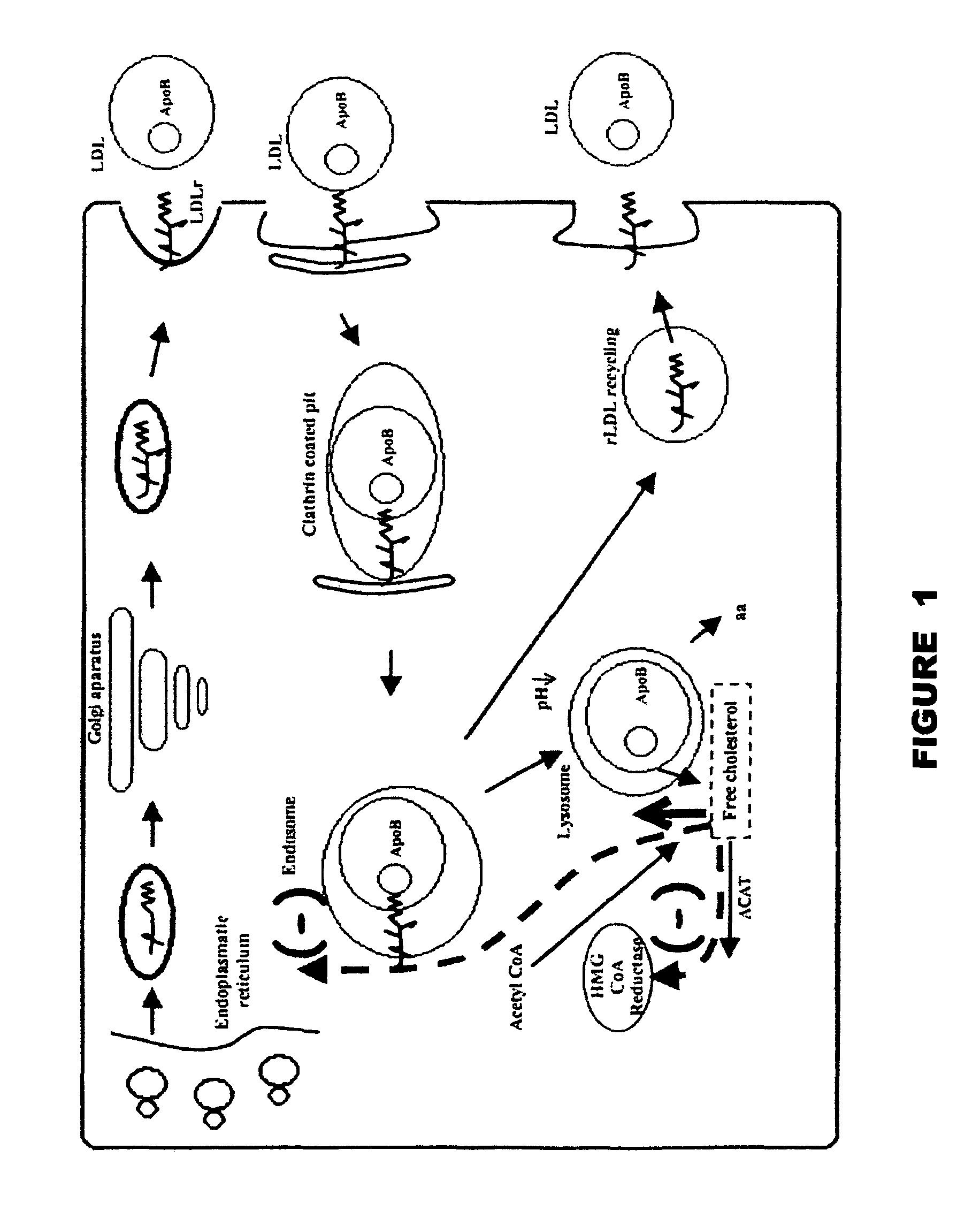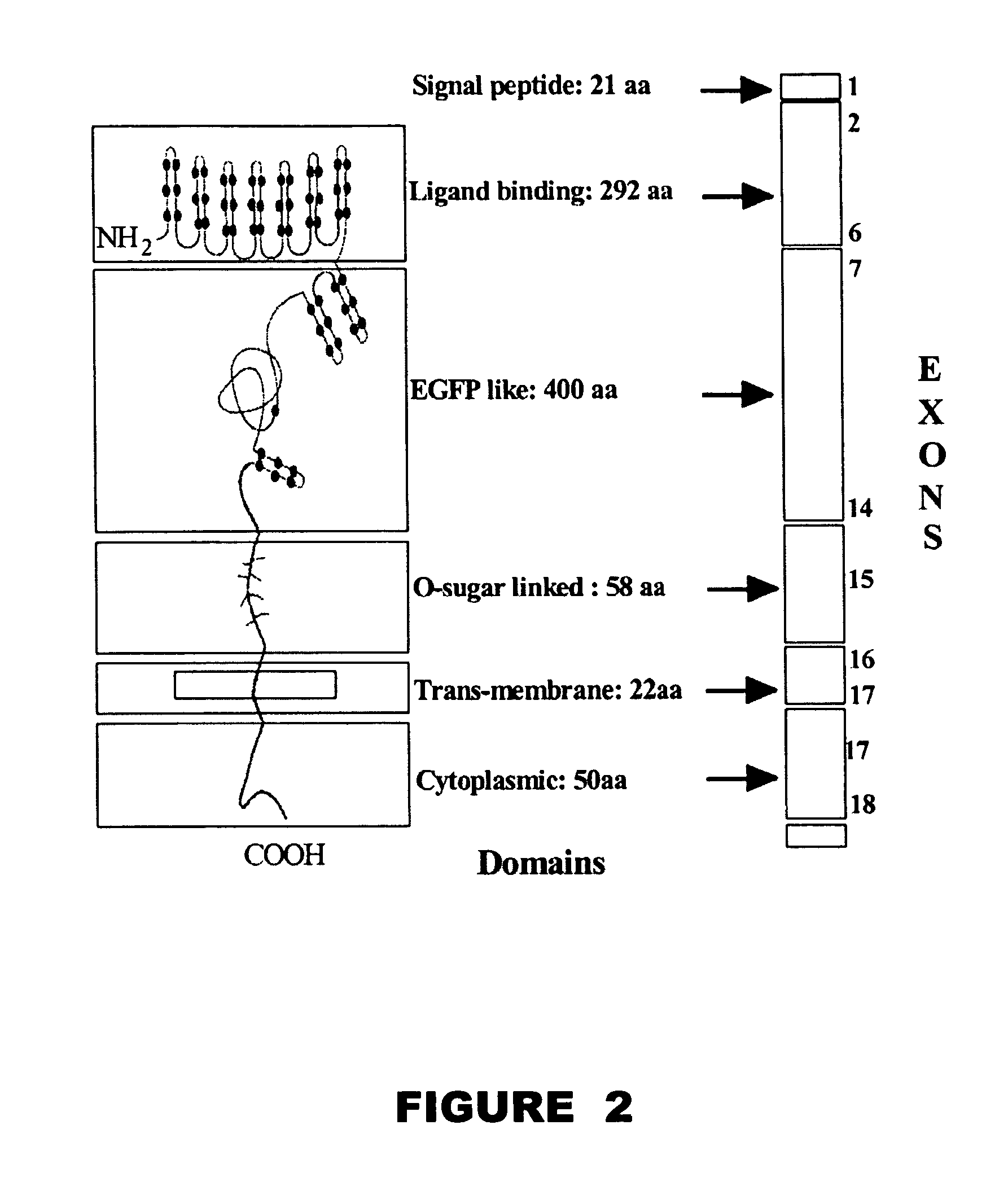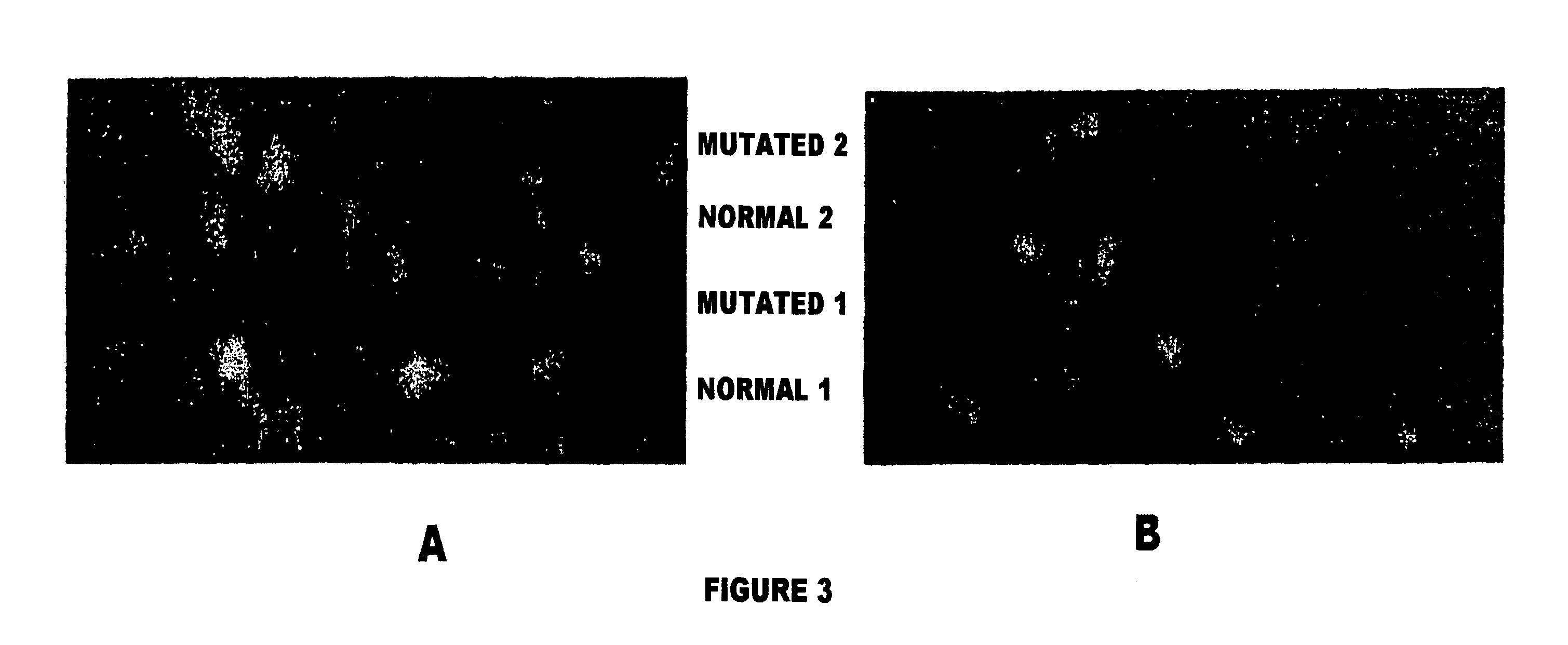Method and device for the detection of mutations in isolated gene sequences of the low-density lipoprotein receptor (LDL-r) which is associated with familial hypercholesterolemia
a low-density lipoprotein receptor and gene sequence technology, applied in biochemistry apparatus and processes, organic chemistry, fermentation, etc., can solve the problems of patients not meeting the fh criteria, ldl cholesterol accumulation in plasma, and the capacity of the kidney is reduced
- Summary
- Abstract
- Description
- Claims
- Application Information
AI Technical Summary
Benefits of technology
Problems solved by technology
Method used
Image
Examples
example 1
Identification of Mutations Located in Exon 1 of the LDLr Gene
[0071]A 215 bp fragment of exon 1 of the LDLr gene was amplified by polymerase chain reaction (PCR) using the primers Ex1F (SEQ ID NO: 2) y Ex1R (SEQ ID NO: 3).
[0072]DNA (500 ng) was amplified in a 50 μL reaction mixture containing 20 mM Tris-HCl, pH 8.4, 50 mM KCl, 1.5 mM MgCL2, 200 μM each dNTP, 0.2 μM each primer and 1.5 units of Taq DNA polymerase (Gibco BRL, Carlsbad, Calif., USA). The amplification cycle was: 10 min of denaturation at 96° C., followed by 35 cycles of denaturation at 94° C. for 1 min, annealing at 59° C. for 1 min, and elongation at 74° C. for 2 min, and a final extension of 72° C. for 10 min.
[0073]PCR products were analyzed by Single Strand Conformation Polymorphisms (SSCP). Those fragments that showed abnormal SSCP patterns were sequenced using an automated CEQ 2000XL DNA Analysis System (Beckman Coulter, Palo Alto, Calif., USA). The presence of the identified mutations was subsequently determined ...
example 2
Identification of Mutations Located in Exon 2 of the LDLr Gene
[0082]A 183 bp fragment of exon 2 was amplified by polymerase chain reaction (PCR) using the following desoxynucleotides: Ex2F (SEQ ID NO: 4) and Ex2R (SEQ ID NO: 5).
[0083]The amplification reaction was performed in a 50 μL final volume with 500 mg DNA in a mixture of 20 mM Tris-HCl, pH 8.4, 50 mM KCl, 1.5 mM MgCL2, 200 μM each dNTP, 0.2 μM each desoxyoligonucleotide and 1.5 units of Taq DNA polymerase (Gibco BRL, Carlsbad, Calif., USA). The amplification cycles were: 10 min of denaturation at 96° C., followed by 35 cycles: denaturation at 94° C. for 1 min, hybridization at 59° C. for 1 min, and elongation at 72° C. for 2 min, and a final extension of 72° C. for 10 min.
[0084]PCR products were analyzed by Single Strand Conformation Polymorphisms (SSCP) and those fragments that showed an abnormal SSCP pattern were sequenced using an automated CEQ 2000XL DNA Analysis System (Beckman Coulter, Palo Alto, Calif., USA). The pres...
example 3
Identification of Mutations Located in Exon 3 of the LDLr Gene
[0095]A 196 bp fragment of exon 3 of the LDLr gene was amplified by polymerase chain reaction (PCR) using the following primers: Ex3F (SEQ ID NO: 6) y Ex3R (SEQ ID NO: 7).
[0096]DNA (500 ng) was amplified in a 50 μL reaction mixture containing 20 mM Tris-HCl, pH 8.4, 50 mM KCl, 1.5 mM MgCL2, 200 μM each dNTP, 0.2 μM each primer and 1.5 units of Taq DNA polymerase (Gibco BRL, Carlsbad, Calif., USA). The amplification cycle was: 10 min of denaturation at 96° C., followed by 35 cycles of denaturation at 94° C. for 1 min, annealing at 59° C. for 1 min, and elongation at 72° C. for 1 min, and a final extension of 72° C. for 10 min.
[0097]PCR products were analyzed by Single Strand Conformation Polymorphisms (SSCP) and those fragments that showed abnormal SSCP patterns were sequenced using an automated CEQ 2000XL DNA Analysis System (Beckman Coulter, Palo Alto, Calif., USA). The presence of the identified mutations was subsequent...
PUM
| Property | Measurement | Unit |
|---|---|---|
| Density | aaaaa | aaaaa |
Abstract
Description
Claims
Application Information
 Login to View More
Login to View More - R&D
- Intellectual Property
- Life Sciences
- Materials
- Tech Scout
- Unparalleled Data Quality
- Higher Quality Content
- 60% Fewer Hallucinations
Browse by: Latest US Patents, China's latest patents, Technical Efficacy Thesaurus, Application Domain, Technology Topic, Popular Technical Reports.
© 2025 PatSnap. All rights reserved.Legal|Privacy policy|Modern Slavery Act Transparency Statement|Sitemap|About US| Contact US: help@patsnap.com



